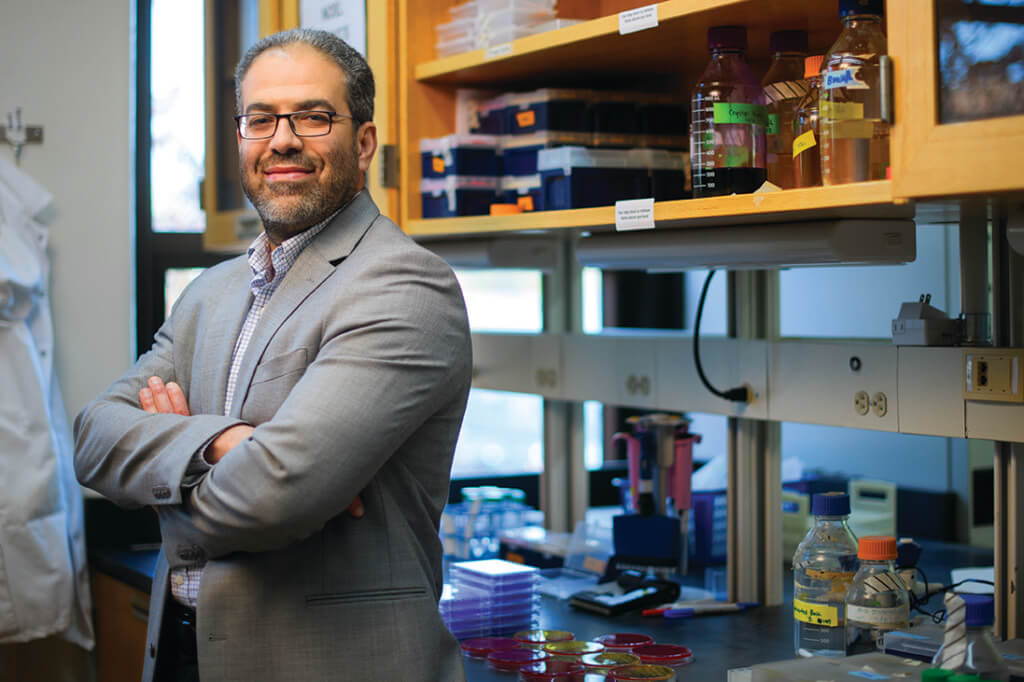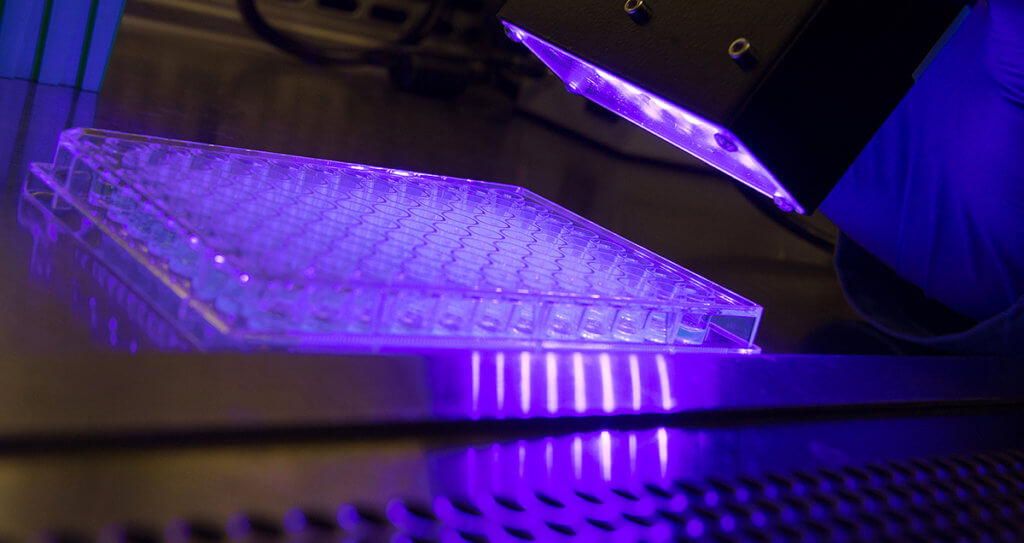Infectious Diseases and Immunology
The world is running out of antibiotics. This researcher is working on finding a solution.
October 16, 2019
With too few antibiotics under development to keep up with the rise of antibiotic-resistant infections, the world is starting to run out of antibiotics.
CPB Faculty Member Pursues New Research on Antibiotic-resistant Infections
July 12, 2019
With antimicrobial resistance on the rise, many infections once easily treated are becoming fatal. Vancomycin-resistant enterococci (VRE) is to blame for more than 5% of all deaths attributed to antibiotic-resistant infection in the U.S., second only to MRSA. Led by Dr. Mohamed Seleem, professor of microbiology in Purdue Veterinary Medicine’s Department of Comparative Pathobiology, researchers now are exploring whether they could repurpose some drugs, which have already been approved by the FDA, to treat the infection.
Research Involving PVM Scholar Finds Blue light Could Treat Superbug Infections
April 5, 2019
Methicillin-resistant Staphylococcus aureus (MRSA), a bacterium that causes infection in various parts of the body, is often called a “superbug” thanks to its ability to dodge many common antibiotics. Researchers at Purdue University and Boston University have discovered that exposing the bug to blue light can render it defenseless against antiseptics as mild as hydrogen peroxide.
Purdue Poster Session Highlights PVM Graduate Students’ Interdisciplinary Research Efforts
April 5, 2019
A recent “Health and Disease: Science, Technology, Culture, and Policy Research Poster Session” showcased more than 100 graduate student presenters from colleges across campus, including several from the College of Veterinary Medicine.
New NIH Grant Helps Dr. Mohamed Seleem Pursue Faster Method for Diagnosing Blood Infections
January 18, 2019
Dr. Mohamed Seleem, professor of microbiology in the Purdue Veterinary Medicine Department of Comparative Pathobiology, and his collaborator at Boston University have received a $1.7 million grant from the National Institutes of Health (NIH) for their research to develop a faster means of diagnosing often lethal bloodstream infections.
Record Research Funding Bodes Well for Animals, Humans
December 4, 2018
Purdue has a great deal to celebrate in 2019. As the University hails 150 years of “Giant Leaps,” the College of Veterinary Medicine marks its 60th Anniversary as a national standard-bearer for veterinary education and animal health care. Many of the same faculty responsible for educating future veterinarians and providing top-ranked health care to animals also are drawing in record amounts of funding for research — research that in most cases promises to benefit humans as well as animals. In the 2017-2018 fiscal year, the College’s research garnered more than $12 million — an all-time high.
PVM Professor Collaborates on Research Team Developing Alternative Treatment for MRSA Infections
October 26, 2018
Dr. Mohamed Seleem, professor of microbiology in Purdue Veterinary Medicine’s Department of Comparative Pathobiology, is part of a research team that is testing whether a light-active version of heme, the molecule responsible for transporting oxygen in blood circulation, may help people infected with MRSA.
Rare Case Leads ADDL Resident to First-time Discovery in White-tailed Deer
December 20, 2017
When Dr. Andrea Vanderpool (PU DVM 2004), resident in anatomic pathology at the Indiana Animal Disease Diagnostic Laboratory, received a biopsy submission of a farmed deer in Indiana, she wasn’t aware she was looking at a landmark discovery.






